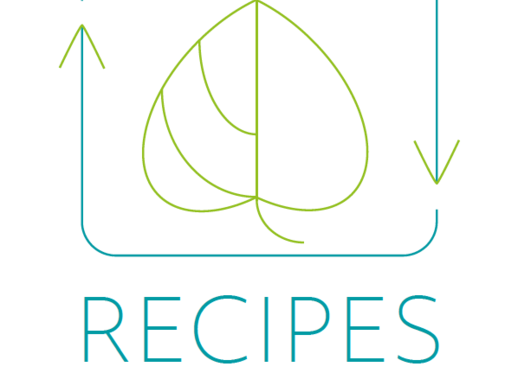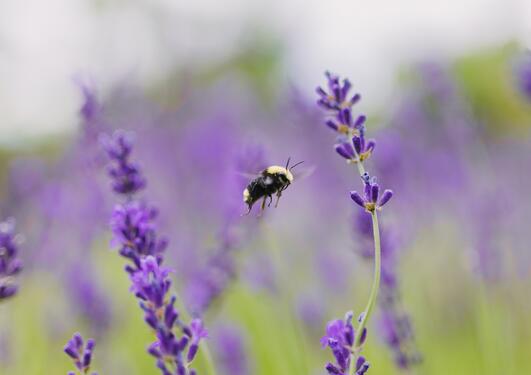Pollinators: The little creatures that run the world
With funding from the EU, University of Bergen researchers and their large transdisciplinary team set out to help society deal with threats related to pollinator decline.

Main content
When Jeroen van der Sluijs, Professor at the Centre for the Study of the Sciences and the Humanities (SVT), received the news that he and his team had received funding from the EU for their proposal BUTTERFLY, he was of course happy. However, he also exclaimed, slightly panicky: "I have never led a consortium of this size before!"
A broad international and transdisciplinary collaboration on pollinator stewardship
As PI of the project, Van der Sluijs certainly has his work cut out for him: He and his UiB team, colleagues Laura Drivdal (University of Bergen Library) and Scott Bremer (SVT), spearhead a multimillion project with a diverse consortium of 24 partners.
The funding from the EU enables the establishment of a broad international and transdisciplinary collaboration aiming at pollinator stewardship in all sectors of the economy.
It also allows the project to focus on the human dimensions of pollinator decline and work to boost the engagement of the social sciences and the humanities in policy-relevant research. This type of research is urgently needed for the successful implementation of Europe’s Biodiversity strategy for 2030 and beyond.
Our society and nature depend on pollinators
Given the challenge BUTTERFLY will grapple with, it is no wonder the consortium needs to be large and varied.
"Our society and nature depend heavily on pollinators, many of which are threatened species. We are thus vulnerable to the far-reaching cascading impacts of pollinator decline," says van der Sluijs.
"90 major crops, which makes up 35 % of the world food production volume, depend on pollinators, and 94 % of all flowering plants on earth rely on hundreds of thousands of different pollinating insect species such as hoverflies, moths, beetles, butterflies and bees, to name a few."
The Butterfly effect
These cascading and potentially devastating impacts of pollinator decline, or the butterfly effect if you will, have given the project its name. However, the butterfly is only one of many pollinators that are vital to our society. This is one of the problems we are facing in trying to deal with the decline and its effects, says van der Sluijs:
"The character and full magnitude of threats to human well-being are poorly known, and pollinators’ benefits are inadequately understood. Other benefits than crop pollination remain for the most part obscure."
What do we (not) know about pollinators?
There are major knowledge gaps regarding the full spectrum of animals that pollinate wild and cultivated plants in Europe and overseas territories beyond the better-known insects like bees, butterflies and moths. Did you know, for instance, that bats are also pollinators?
"BUTTERFLY aims to fill these gaps by increasing our knowledge about pollinators, creating public awareness and appreciation of pollinators’ complex ecological, economic and societal benefits, and helping identify and transform unsustainable practices in agriculture, industry and society," say van der Sluijs.
Tools to help us restore our pollinators
The project will also develop concrete tools to help us restore our pollinators and their habitats: New models and datasets to assess and forecast both monetary and non-monetary value of pollinators, tools for mainstreaming pollinator conservation within the food, health, energy, materials and land management sectors, and stakeholder networks from local to EU levels that will collectively contribute to what the BUTTERFLY team have dubbed "pollinator stewardship."
"'Pollinator stewardship' is the proactive and responsible caretaking for enhancing positive and reducing negative impacts on pollinators and pollinator dependent biodiversity in all one’s activities," explains van der Sluijs.
Living Labs
A lot of this work will be done in BUTTERFLY’s network of Living Labs, which will serve as breeding places for multi-actor co-creation of knowledge and sustainable solutions, paving the way to pollinator stewardship in all sectors.
"A Living Lab is defined as an "open innovation ecosystem in real-life environments using interactive feedback processes throughout a lifecycle approach of an innovation to create sustainable impact," says van der Sluijs.
BUTTERFLY's Living Labs will assess how five key biomass supply chains (food/micronutrients, pharmaceuticals, cosmetics, biomaterials, biomass energy) critically depend on pollination. Together with all actors involved in each supply chain, the Living Labs will co-create and test pollinator restoration options that increase the resilience of these supply chains.
Metamorphosis
The metamorphosis by which a caterpillar turns into a butterfly symbolises the project’s transformative approach that is essential to get biodiversity back on a path to recovery. Van der Sluijs highlights that once we better understand how the negative consequences of pollinator loss can cascade into catastrophes, this same butterfly effect can be used as a strategy for positive change:
Small, well-chosen pollinator restoration efforts can cascade into large impacts benefiting pollinator populations.
Ultimately, what BUTTERFLY hopes to achieve is to enhance society’s capacity to appraise, foresee, and respond to the threats posed by cascading impacts of pollinator decline on nature, society, economy and human wellbeing.




